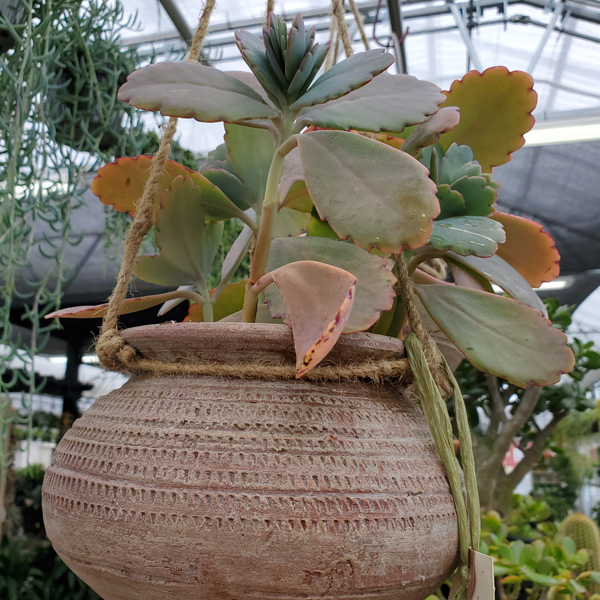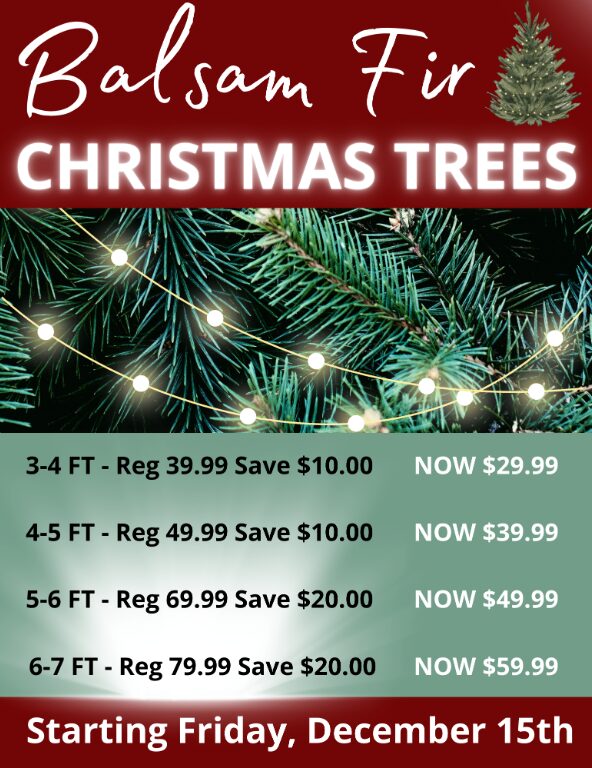Fertilizing
A good fertilizing program will promote vigorous, healthy plants. Fertilizer should be applied at least once a year. Plants that are healthy and growing vigorously are less susceptible to attack by insects and disease. Start your fertilizing program after your plants have been growing for one year. Remember to always read and follow label directions. Trees, shrubs, and groundcovers can be fertilized in the spring or in the fall with a balanced fertilizer such as 8-8-8 or 10-10-10. The three numbers represent the major macronutrients essential for plant growth: nitrogen, phosphorous, and potassium. A product like Holly-Tone, formulated for acid loving plants, works especially well for needled and broadleaved evergreens. In the fall, broadleaved evergreens should be fertilized before Halloween; a nitrogen or phosphate boost after that time may cause them to put on new growth without time to harden it off. Other evergreens can be fertilized until mid-November. Note that organic fertilizers are inactive during consistently cold weather. The majority of plants growing in New England prefer acid soils. The native soils in this area tend to be acidic. Improper pH will hinder the plant’s ability to take up valuable nutrients. If you are uncertain of the pH of your soil, you may want to have it tested. If your soil test results show a high pH (more alkaline than acid), products such as cottonseed meal, iron sulfate and other soil amendments are available at our Garden Center and will adjust the pH into a more appropriate range for plant growth.
Turf
The easiest way to maintain a healthy lawn is to apply fertilizer four times a year. Weston Nurseries has made it easy by carrying a simple to use 4-step weed and feed program for your lawn. If you live in a watershed area leading to a lake or pond, we carry a phosphorous-free fertilizer. This product will help keep lakes and ponds free from excess phosphorous that leads to aquatic vegetation problems. Our native soils have an ample supply of phosphorous for sustainable healthy lawns.
Weed Control in Plant Beds
Weeds compete with desirable plants for light, nutrients, and water; are unsightly; and can promote insect and disease problems. They can be controlled by mulching, hand removal, and by applying herbicides such as Round Up. Pre-emergent controls such as Preen can also help keep weeds to a minimum.
Mulching
Good quality mulch is both decorative and functional. Mulch covering your planting beds at a depth of two to four inches will reduce weeds, moderate soil temperatures, conserve soil moisture in the root zone, prevent run-off and erosion and add an aesthetic quality to the landscape. Improper mulching can impair plant health and lead to the decline of the plant material. Mulch should be placed in a wide band over the root zone, tapering to but not touching the trunk or plant base. Never allow mulch to build up in “volcanoes” around tree trunks. While there are many types of mulches on the market, we recommend untreated, shredded pine or hemlock mulch. Organic mulches, such as ground leaves, are also good. Peat moss should never be used as a mulch because it can form a mat that prevents water from draining through to the root system. Under no circumstances should fresh mulch be mixed in with the soil.
Pruning
After planting, prune only broken or damaged branches. It is important to leave as much foliage on the plant as possible. The photosynthesis process initiated by leaves results in sugar and other carbohydrates being transferred for root system development. As plants mature you may wish to control their shape or size. There are several excellent books on pruning available in the Garden Center, and we are happy to answer your pruning questions on the phone.
Staking
Stake trees as necessary following instructions in our “Planting Guidelines.” Remove or adjust all stakes one year after initial installation so that the tree can develop properly.
Winter Protection
An application of an anti-desiccant, like Wilt-Pruf, on evergreens at the end of November will protect them from drying winter winds–especially important for newly planted broadleaved evergreens.
CULTURAL REQUIREMENTS FOR SELECTED SHRUBS
Azalea
Rich, humusy, acidic, well-drained soil. Sandy or dry soil should be amended before planting, as should heavy clay. Evergreen azaleas prefer partial shade. Protect from harsh summer and winter sun as well as wind. Deciduous azaleas prefer full sun but will tolerate light shade, some more than others.
Boxwood
Full sun or partial shade. They prefer a rich well-drained soil and protection from harsh wind. Fertilizer such as Plant-O-Ganic should be applied each spring. Although not fond of wet soil, boxwoods dislike dry soil as well. Dry soil should be amended with organic matter in the form of compost, peat moss, composted cow manure, peat humus, or a combination of those ingredients.
Euonymus
Will tolerate full sun or partial shade and prefer rich well-drained soil. Fertilizer, such as Plant-O-Ganic, should be applied each spring.
Ilex (hollies)
Useful in sunny or shaded locations. If given rich, well-drained soil, they will thrive. Wet or dry sandy soil should be avoided. Sandy soil, however, can be improved with organic matter. They do require protection from harsh wind and enjoy a spring feeding with Plant-O-Ganic or Holly-Tone.
Kalmia (mountain laurel)
Prefer partial shade but will tolerate sunny spots and deeper shade. In a sunny location, they must be protected from wind, and the soil should be amended if dry. Shaded locations prevent kalmia from flowering as heavily, but the plant will maintain foliage and thrive.
Leucothoe
Rich, well-drained soil. It will not tolerate strong sun and thrives best in partial or deep shade.
Pieris (andromeda)
Prefer a rich well drained soil and partial shade. Needs protection from harsh wind.
Rhododendron
Prefer rich, humusy, acidic, well-drained soil. Sandy or dry soil should be amended before planting, as should heavy clay. Large leaved (elepidote) rhododendrons prefer partial shade and protection from harsh summer and winter sun as well as wind; some tolerate deep shade. Small leaved (lepidote) rhododendron prefer full sun.




